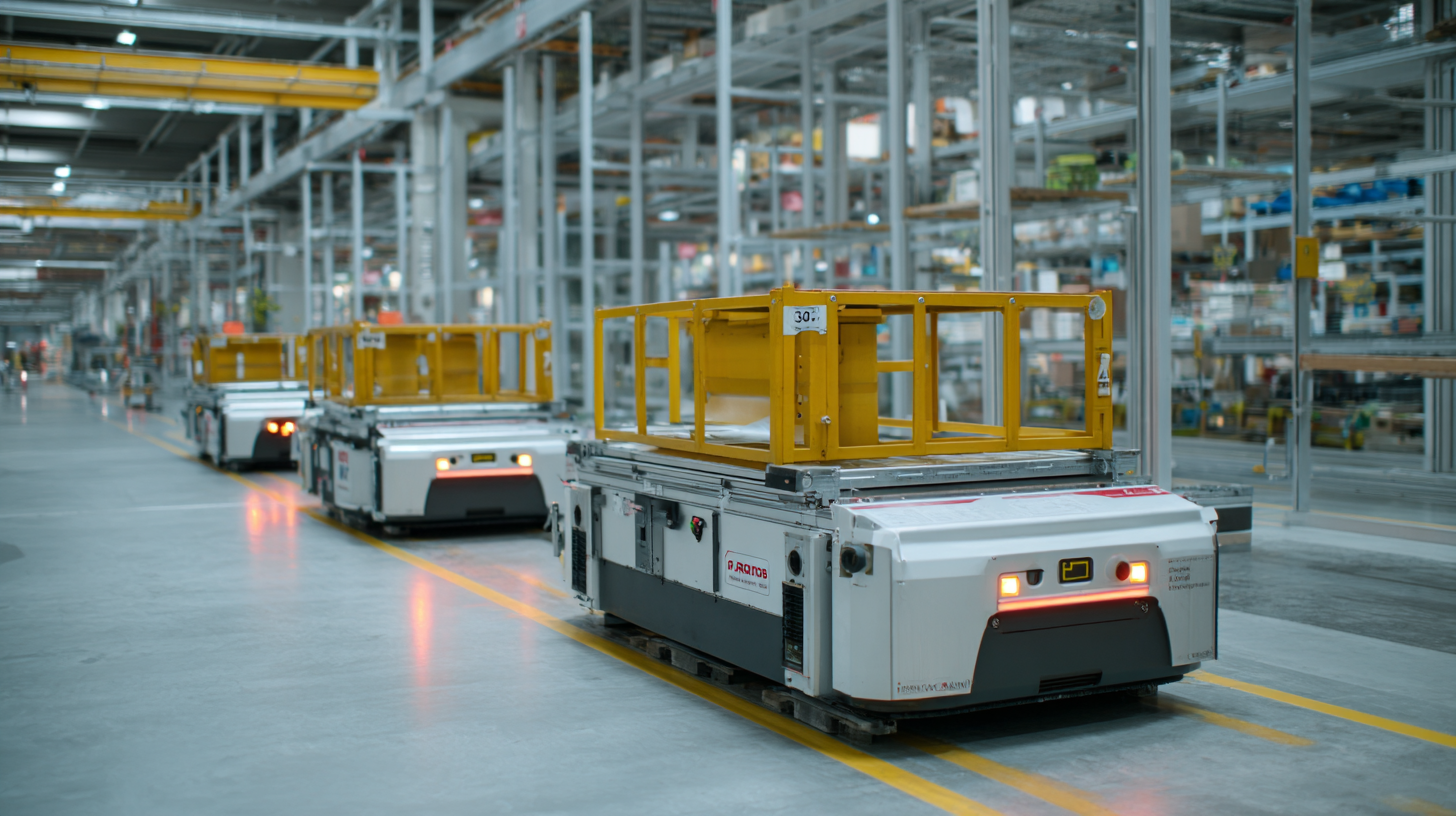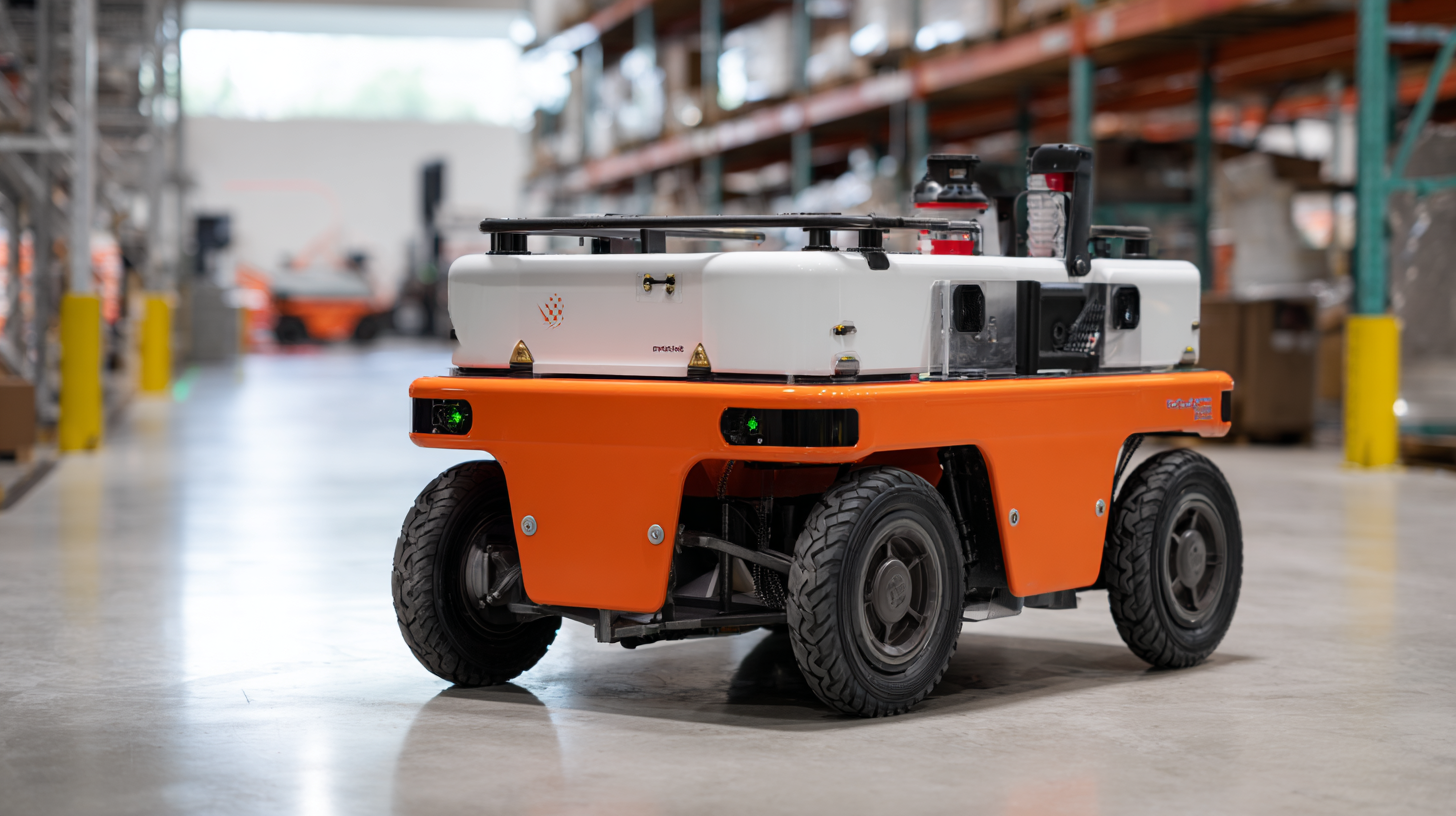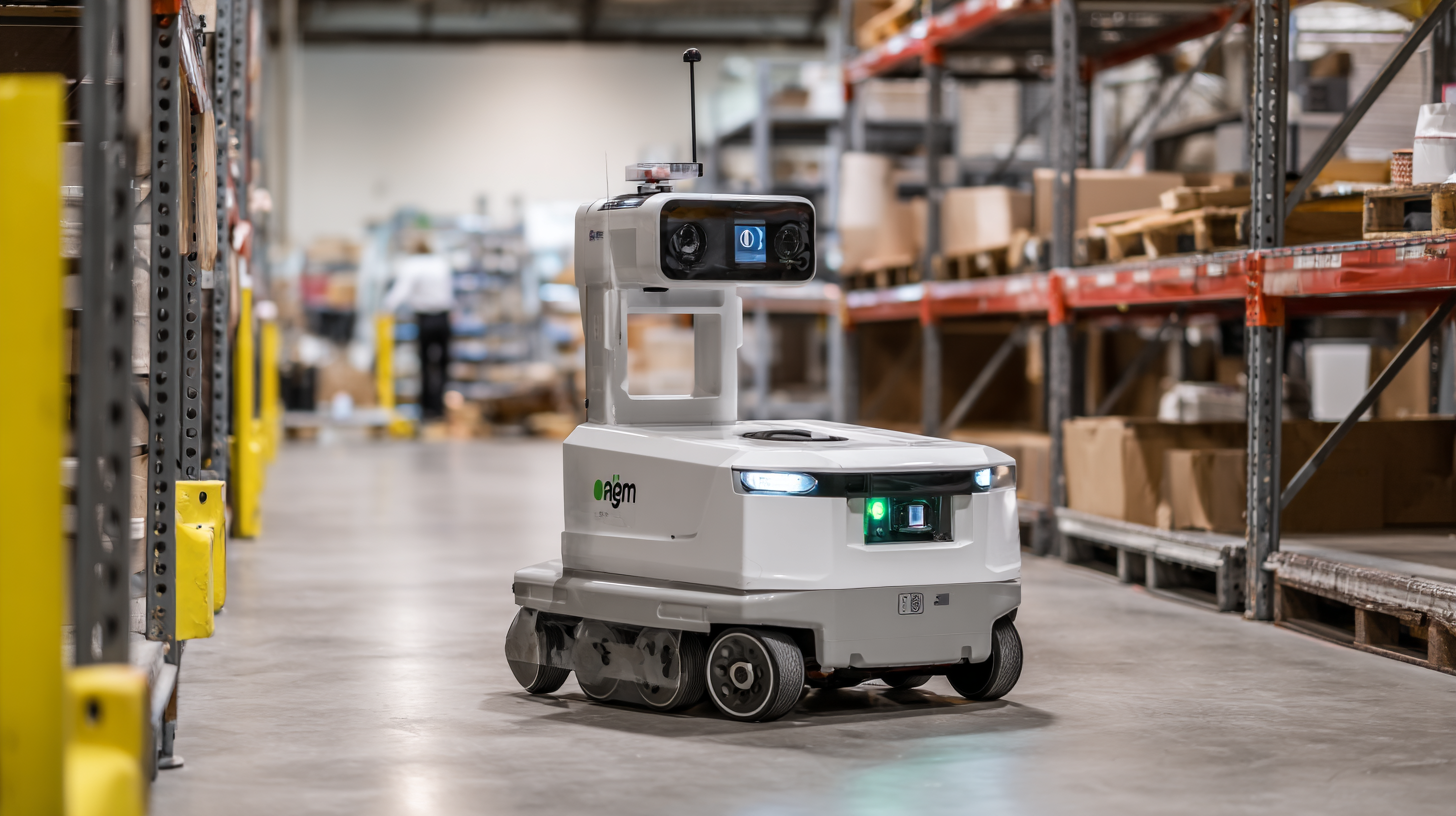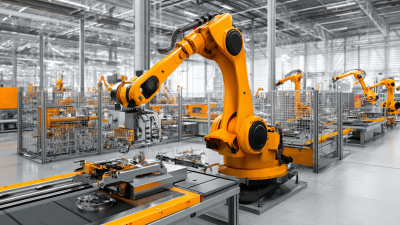How to Maximize Efficiency with AMR Robots in Your Business Operations
In today's fast-paced business environment, maximizing operational efficiency is crucial for maintaining a competitive edge. AMR robots, or Autonomous Mobile Robots, have emerged as a transformative technology in various sectors, from manufacturing to logistics. According to a report by Deloitte, 58% of companies are considering or currently investing in robotics and automation technologies to enhance productivity. Furthermore, ABI Research highlights that the global market for AMR is anticipated to reach $2.6 billion by 2025, reflecting a CAGR of 20.7% from 2020. These statistics illustrate the growing importance of AMR robots in streamlining operations, reducing labor costs, and increasing throughput. As businesses seek innovative solutions to optimize their processes, understanding how to effectively implement and utilize AMR robots can lead to significant improvements in efficiency and overall performance.

Understanding the Role of AMR Robots in Streamlining Business Processes
As businesses seek to enhance operational efficiency, the role of Autonomous Mobile Robots (AMRs) has become increasingly pivotal. The recent deployment of AMRs in various sectors illustrates their capacity to streamline processes and significantly boost productivity. For instance, a third-party logistics company reported a productivity increase of over 40% after integrating an automation solution that utilizes AMRs. This data underscores the transformative power of robotics in logistics, where AMRs navigate environments autonomously using advanced sensors and onboard intelligence, allowing for optimized warehouse operations.
Similarly, Kinrise Snackfoods has adopted AMR technology in its manufacturing plant, deploying multiple units to enhance operational workflows and improve efficiency. This aligns with industry analyses, which indicate that AMR implementation can reduce operational costs by up to 30% and increase order accuracy by 20%. By automating tasks such as inventory management and order fulfillment, companies not only save on labor costs but also minimize human error, allowing employees to focus on more strategic activities. As businesses continue to explore automation, the integration of AMRs proves to be a compelling strategy for streamlining business processes and fostering growth in a competitive market.
How to Maximize Efficiency with AMR Robots in Your Business Operations
| Dimension | Description | Impact on Efficiency |
|---|---|---|
| Speed of Operations | AMR robots can execute tasks more quickly than human workers. | Increases throughput by up to 30%. |
| Labor Cost Reduction | Deploying AMRs reduces the need for manual labor in repetitive tasks. | Potential savings of 20-40% on operational costs. |
| Accuracy and Precision | AMR robots minimize human error in inventory management and logistics. | Improves accuracy rates by up to 99%. |
| Utilization of Space | AMR robots can navigate tight spaces more effectively, maximizing storage. | Potential to increase storage efficiency by 25%. |
| Safety in Operations | AMRs reduce the risk of accidents in environments where heavy lifting is common. | Lowers workplace injury rates by 15-20%. |
Identifying Key Areas for AMR Implementation to Enhance Operational Efficiency
In the pursuit of maximizing efficiency, businesses are increasingly turning to
Autonomous Mobile Robots (AMRs) for their operations. Identifying key areas for AMR implementation is crucial for enhancing operational efficiency.
A recent announcement from a leading technology group highlights the evolution of AMRs into AI-powered robots, underscoring the importance of integrating advanced technologies like AI and precision sensors into robotic systems. This evolution allows AMRs to navigate complex environments more effectively, streamline workflows, and respond swiftly to changes in operational demands.
When considering AMR deployment, focus on high-traffic areas within your organization that require constant movement and logistical support. Warehousing, inventory management, and order fulfillment are prime candidates for AMR integration, helping to reduce bottlenecks and speed up delivery processes.
Tip: Begin your AMR implementation with a pilot program in a designated area to assess performance and gather insights before a full-scale rollout.
Additionally, invest in training staff to work alongside AMRs, ensuring a seamless collaboration that leverages the strengths of both humans and machines. This synergy can lead to enhanced productivity and a more agile workforce.
Tip: Gather feedback from employees during the pilot phase to refine processes and improve integration, fostering a culture of adaptability and innovation within your business.
Quantifying Cost Savings and Efficiency Gains from AMR Robot Integration
Integrating Autonomous Mobile Robots (AMRs) into business operations can lead to significant cost savings and efficiency gains. Companies that implement AMRs often report a notable reduction in labor costs, as these robots can perform repetitive tasks such as material transport, inventory management, and order fulfillment without the need for breaks or overtime pay. By automating these labor-intensive processes, businesses can reallocate their workforce to more strategic roles, thus enhancing overall productivity.
Moreover, the efficiency brought by AMRs also translates into a faster turnaround time for tasks. With real-time navigation and the ability to work in various environments, AMRs can optimize workflows and reduce bottlenecks. Quantifying these benefits can be achieved through specific metrics such as reduced cycle time, improved throughput, and decreased operational errors. By analyzing performance data pre- and post-integration, businesses can clearly see the financial impact of AMRs, showcasing the return on investment through tangible cost reductions and enhanced operational efficiency.
Efficiency Gains and Cost Savings from AMR Robot Integration
Best Practices for Training Workforce to Collaborate Effectively with AMR Robots
As businesses increasingly turn to Autonomous Mobile Robots (AMRs) to streamline operations, workforce training becomes essential for optimizing collaboration. According to a recent report by the International Federation of Robotics, companies that invest in employee training alongside AMR integration can see productivity gains of up to 30%. To achieve these results, organizations need to focus on developing structured training programs that educate staff on how to interact with AMRs effectively.
One best practice includes simulating real-world scenarios during training sessions, enabling employees to gain hands-on experience in managing and coordinating with AMRs. A study from McKinsey highlights that organizations that adopt interactive training methods can improve employee confidence and decrease operational errors by up to 25%. Additionally, fostering an environment of open communication where employees can express concerns and provide feedback about their experiences with AMRs ensures a smoother adaptation process and enhances overall efficiency. By prioritizing workforce training tailored to AMR collaboration, businesses can unlock the full potential of robotic automation.

Measuring Performance Metrics to Evaluate the Impact of AMR Robots in Operations
To effectively integrate Autonomous Mobile Robots (AMRs) into your business operations, it is vital to establish clear performance metrics that can accurately measure their impact. According to a report by the International Federation of Robotics, companies using AMRs have reported productivity increases of up to 30%. Monitoring key performance indicators (KPIs) such as task completion rates, operational downtime, and return on investment (ROI) will provide invaluable insights into how AMRs enhance workflow efficiency.
Tips: Focus on collecting real-time data through integrated software systems to track these metrics accurately. Ensuring your AMRs are equipped with advanced sensors and AI algorithms can further optimize their performance by adapting to dynamic environments.
Another important aspect of measuring the success of AMRs is comparing pre-and post-implementation performance. Research conducted by Deloitte indicates that organizations that actively assess operational changes have a 25% higher success rate with automation technologies. Incorporating benchmarks from industry standards will not only validate the performance of AMRs but also highlight areas for ongoing improvement.
Tips: Regularly review performance data against set benchmarks and encourage feedback from your team to identify any operational hurdles. Establishing a culture of continuous improvement can maximize the benefits of AMRs in your business processes.

Related Posts
-

Challenges Faced by Industries Embracing Robotics and Automation
-

How to Enhance Your Business Efficiency with Think Robotics Solutions
-

Robotics Automation: A Comparative Analysis of Leading Solutions for Global Buyers
-

5 Best Innovations in Robotics Automation Transforming Industries
-

How to Enhance Efficiency in Manufacturing by Rethinking Robotics Integration
-

5 Best Innovations in Think Robotics for the Future of Automation